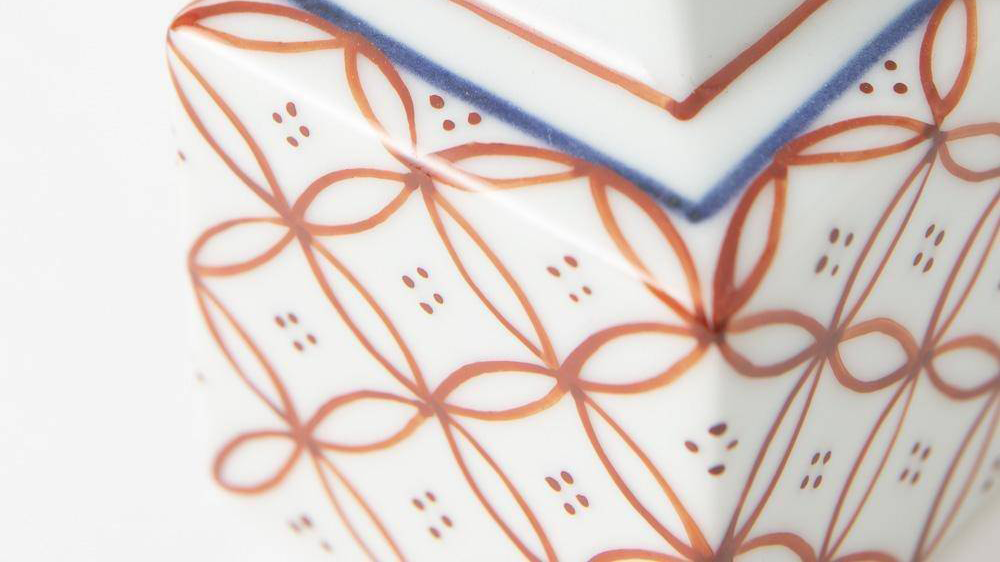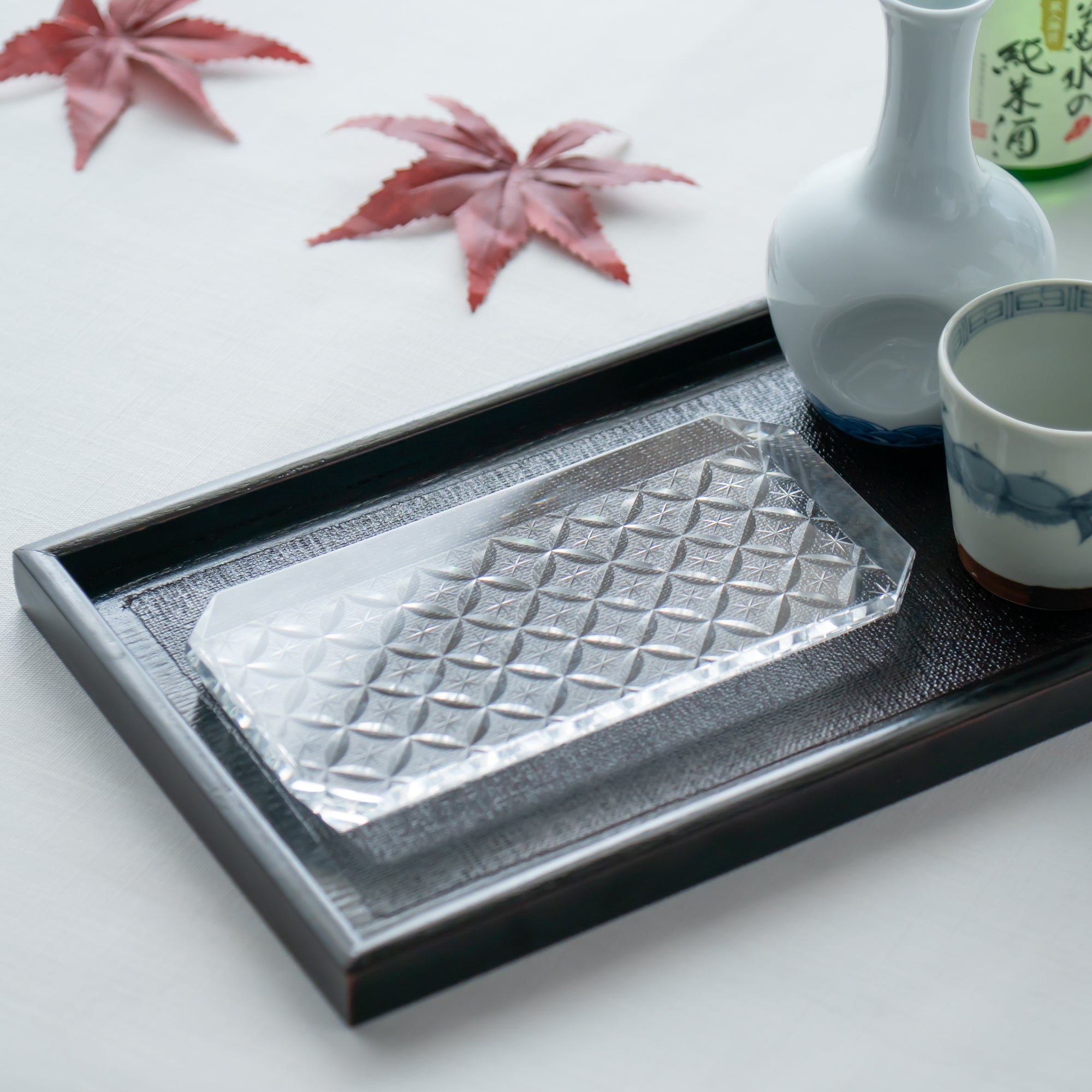
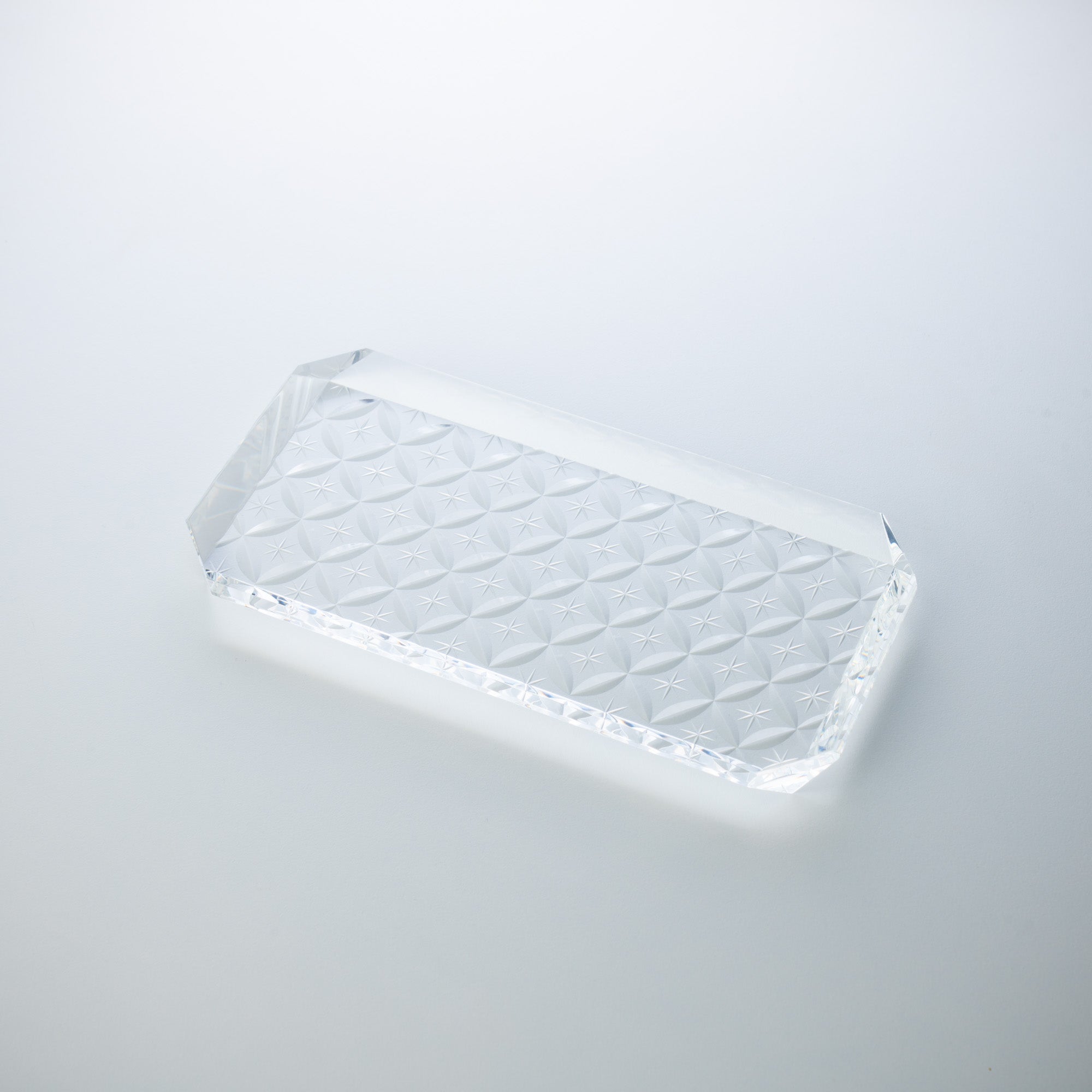
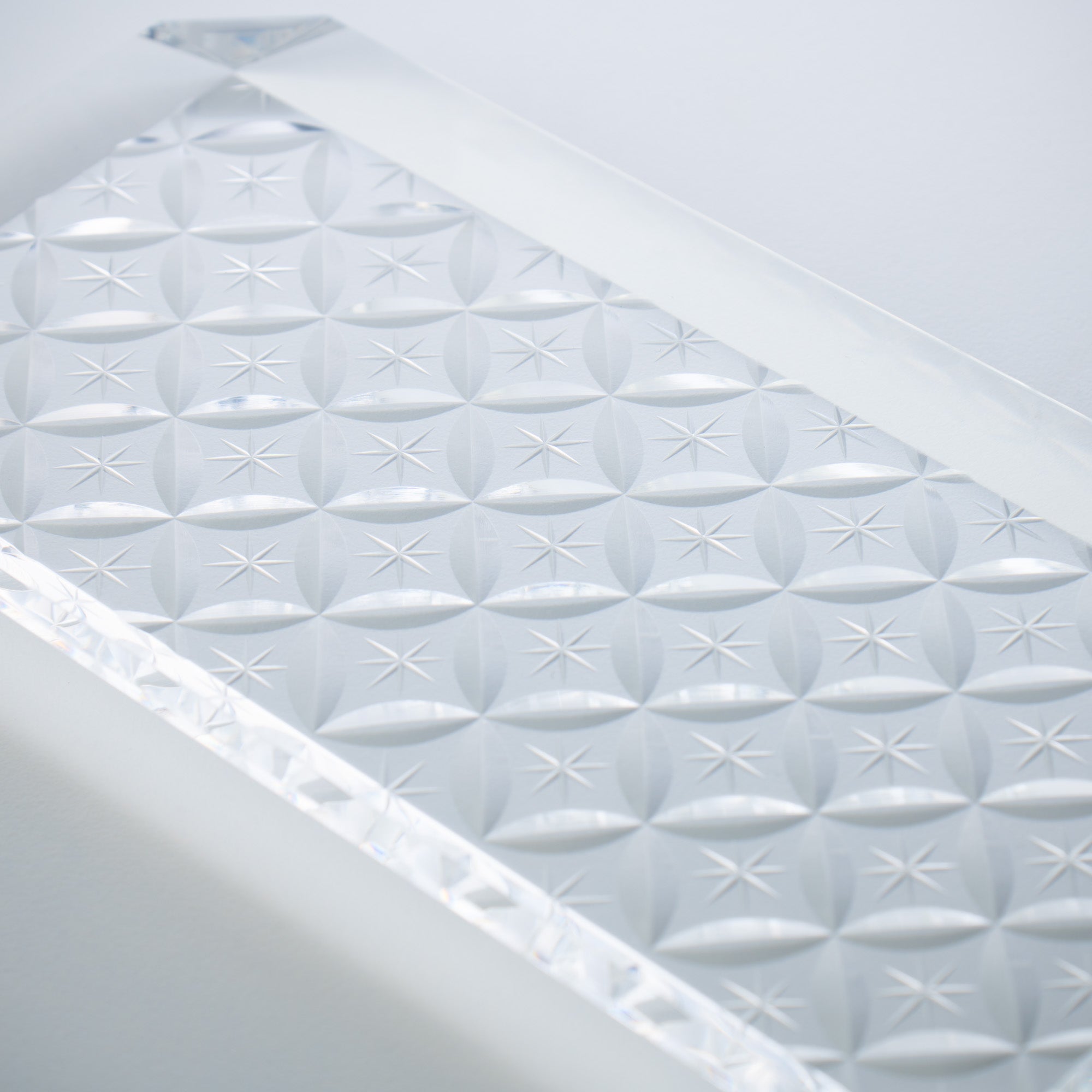
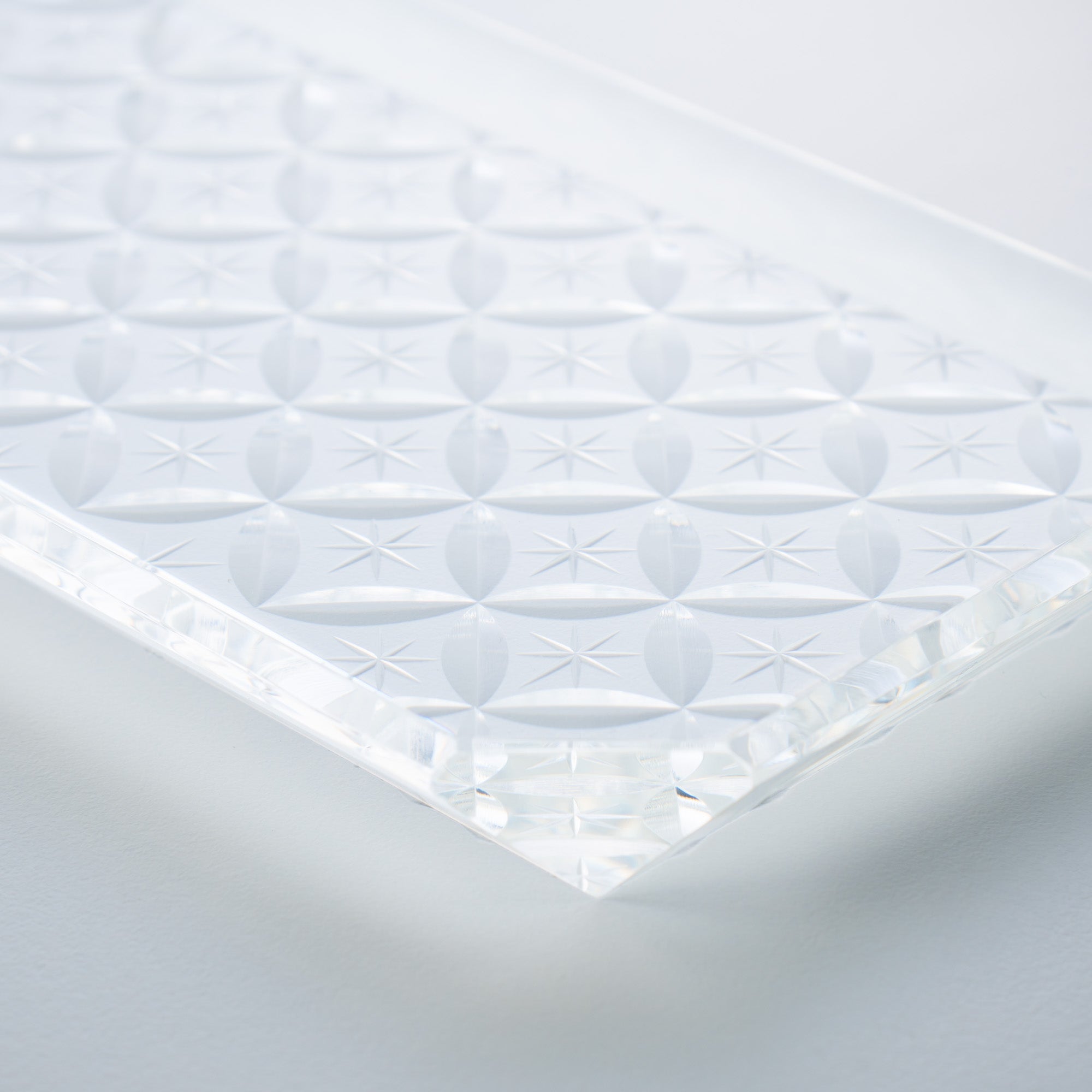
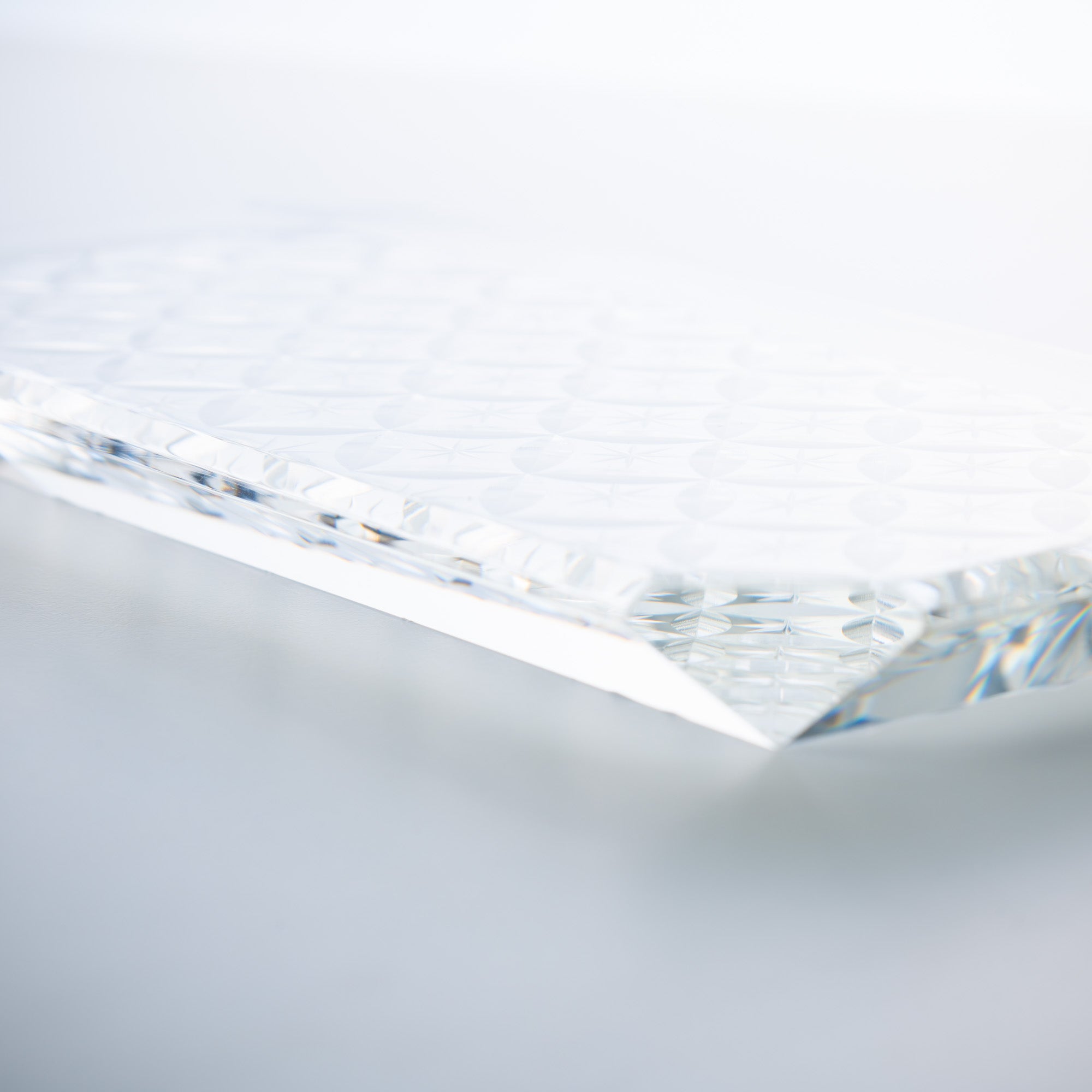
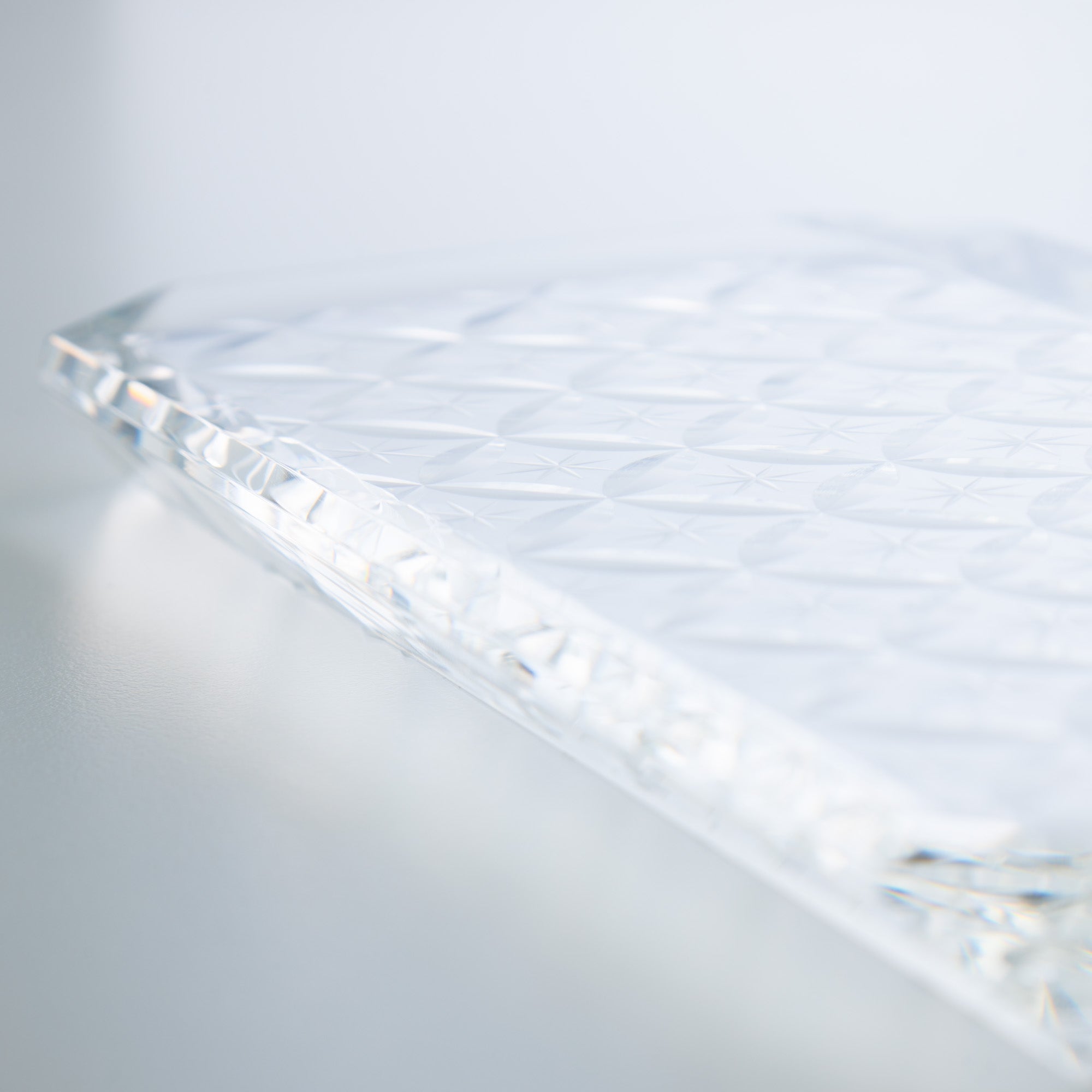
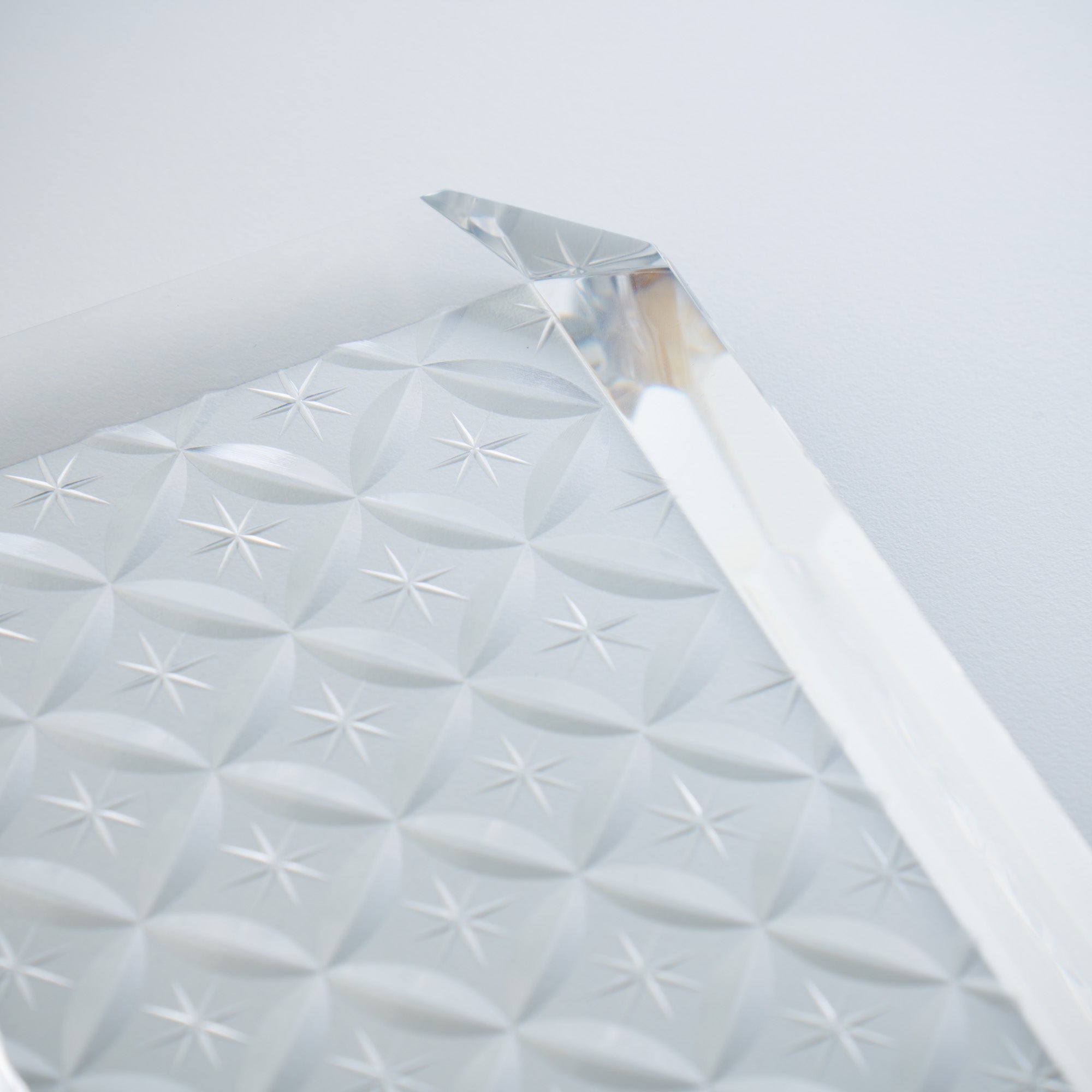
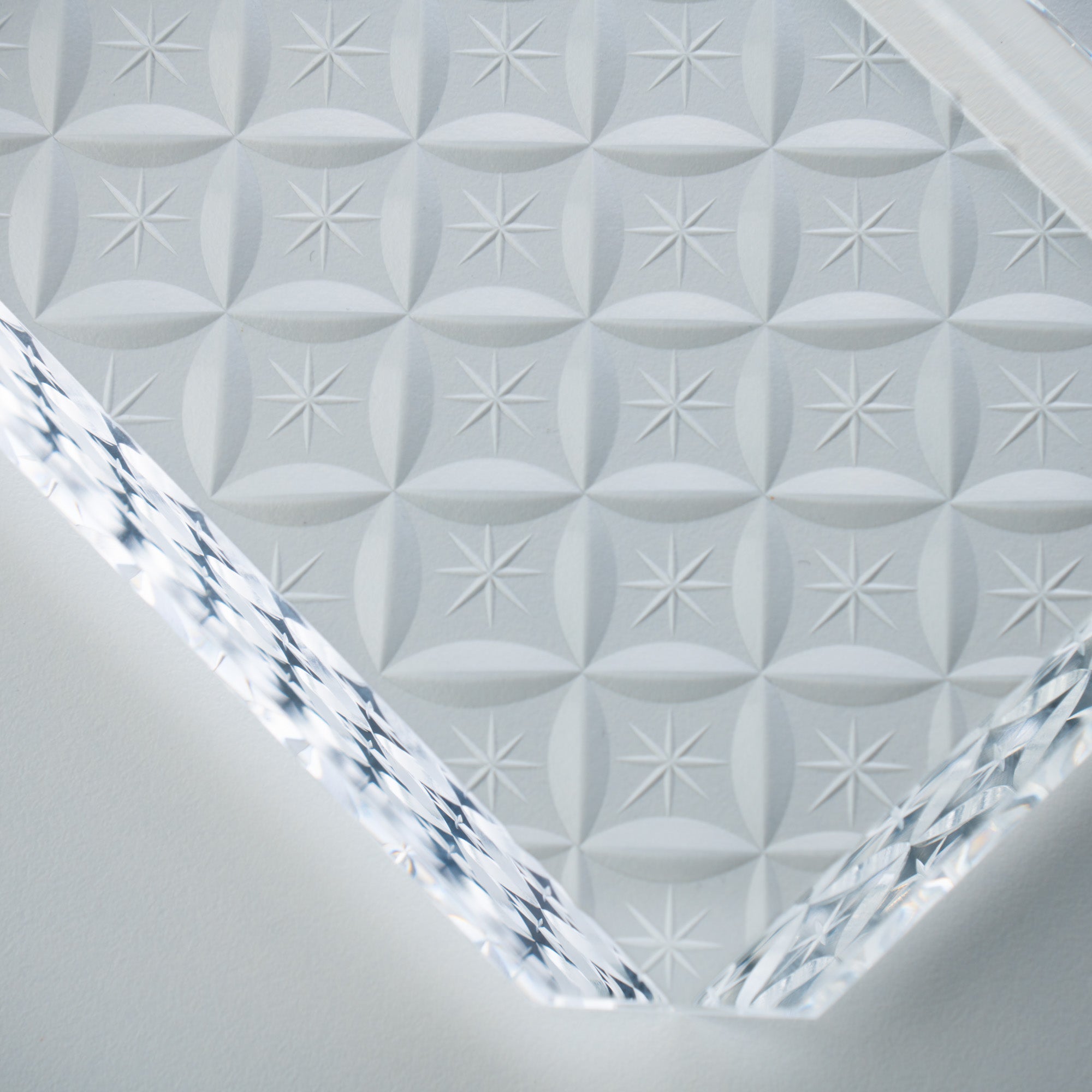
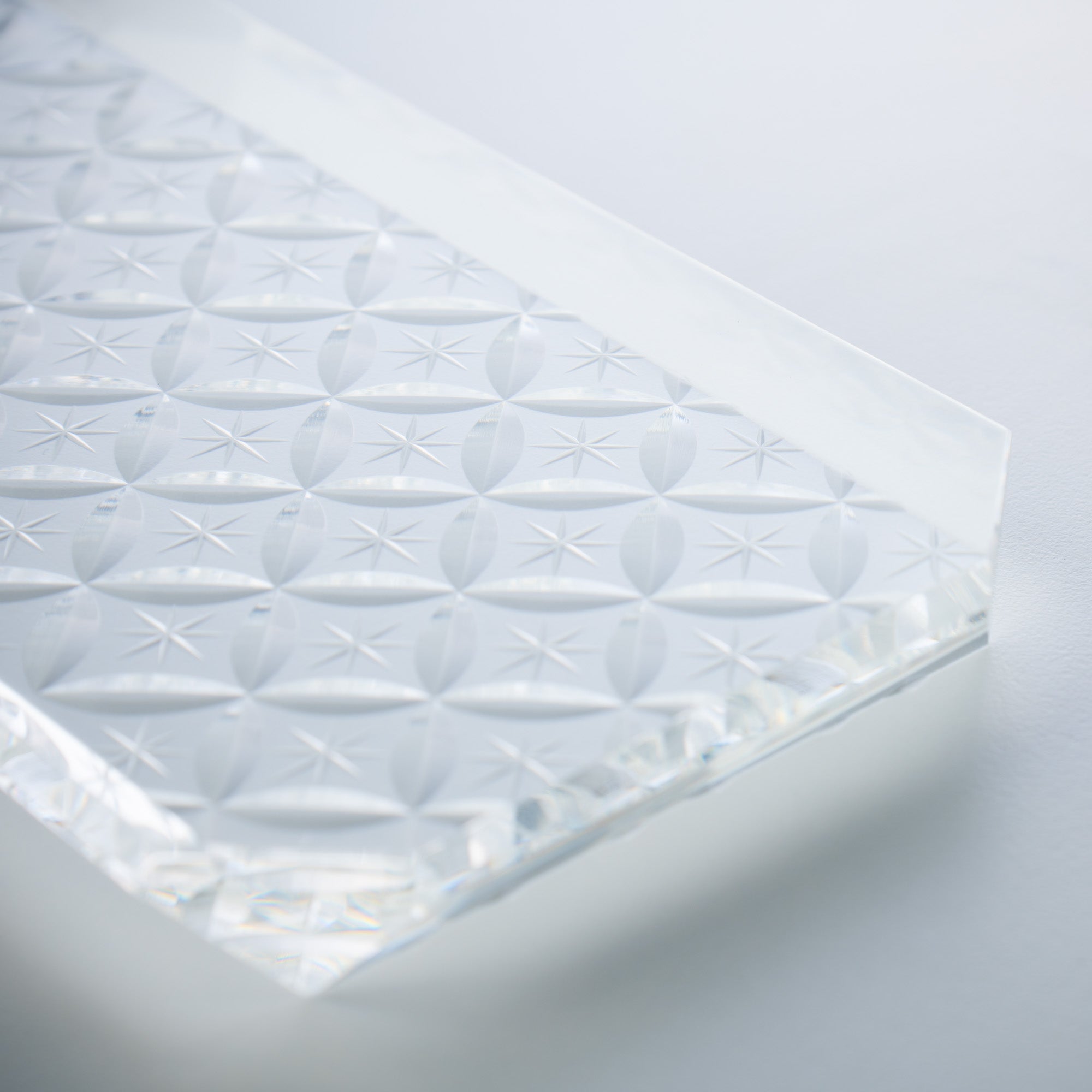
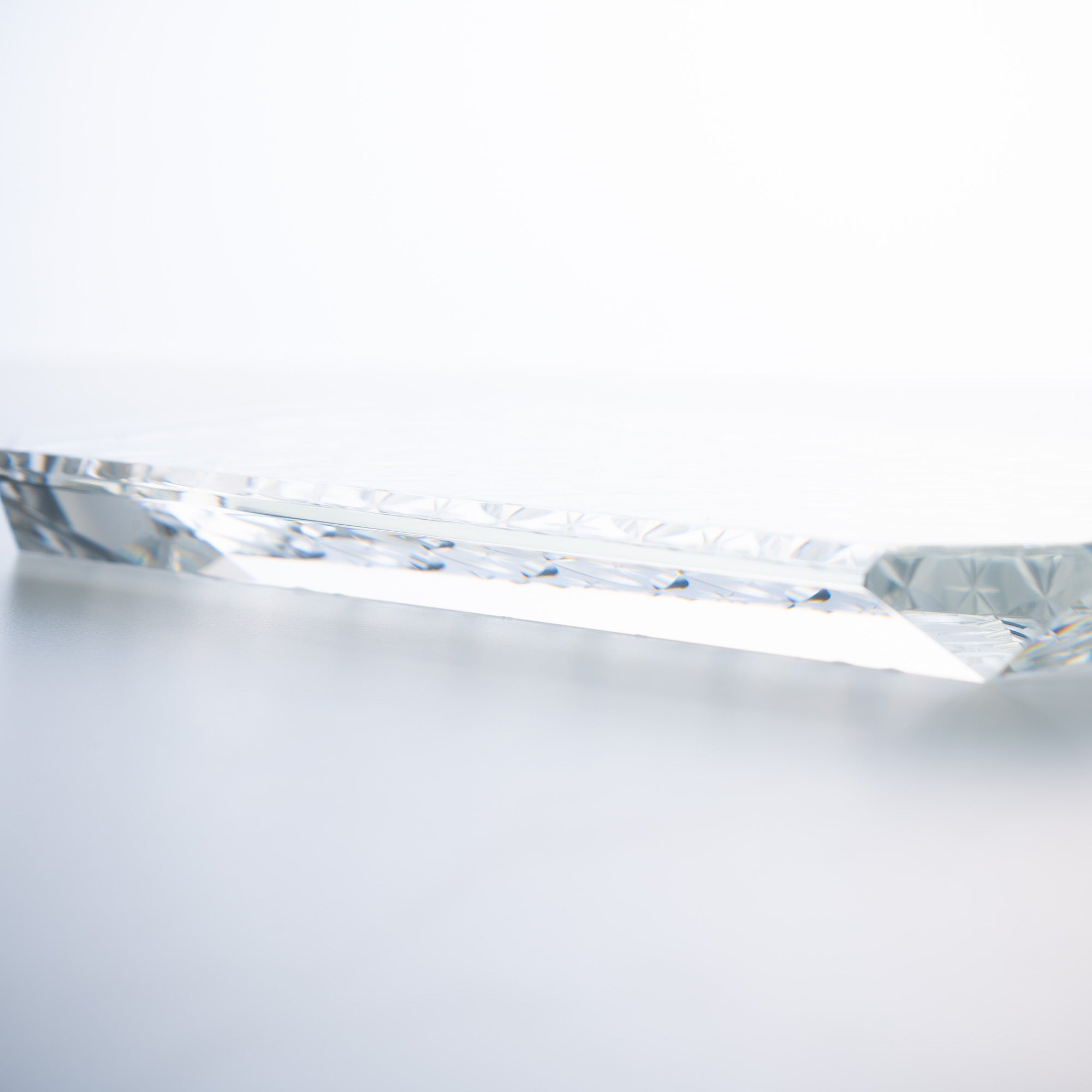
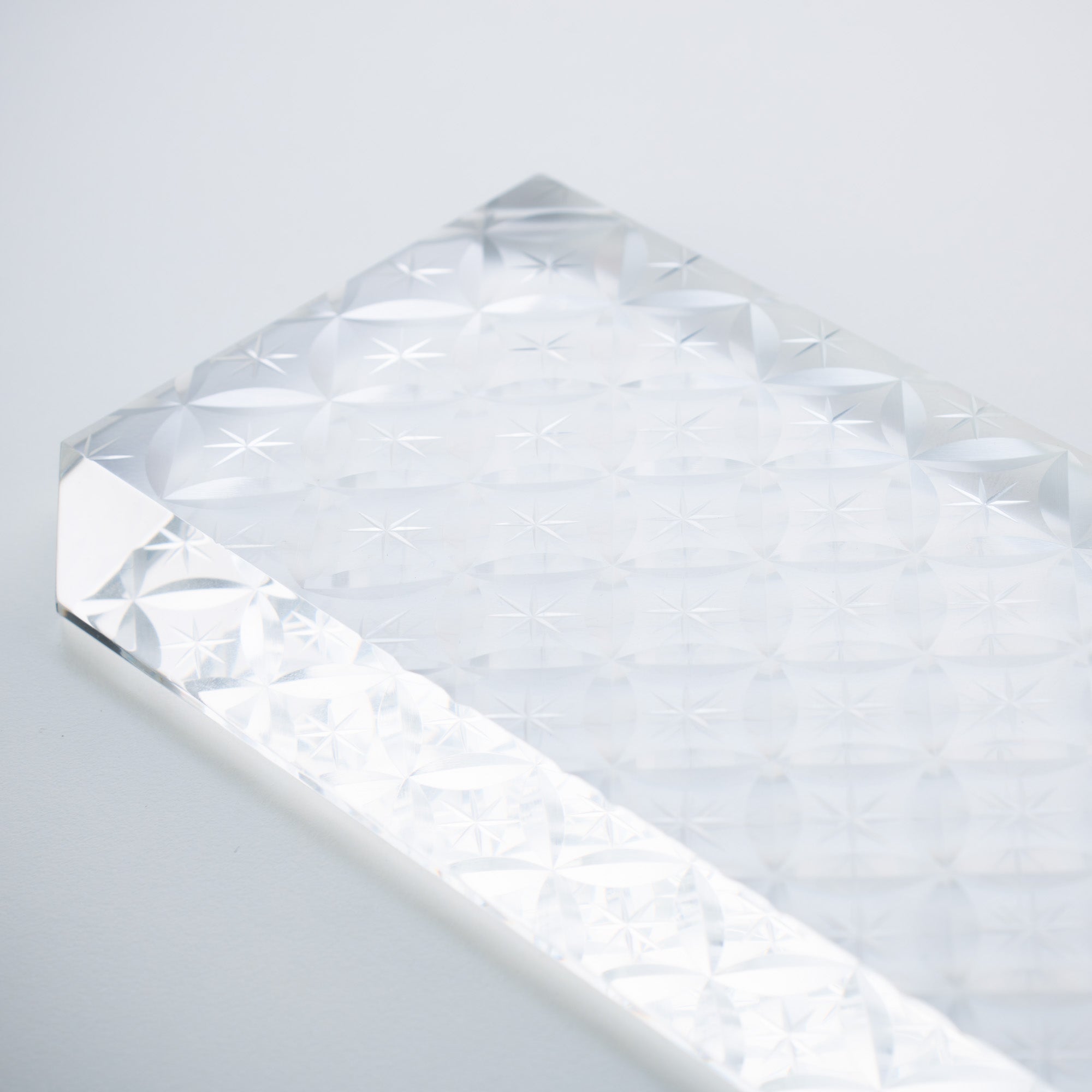
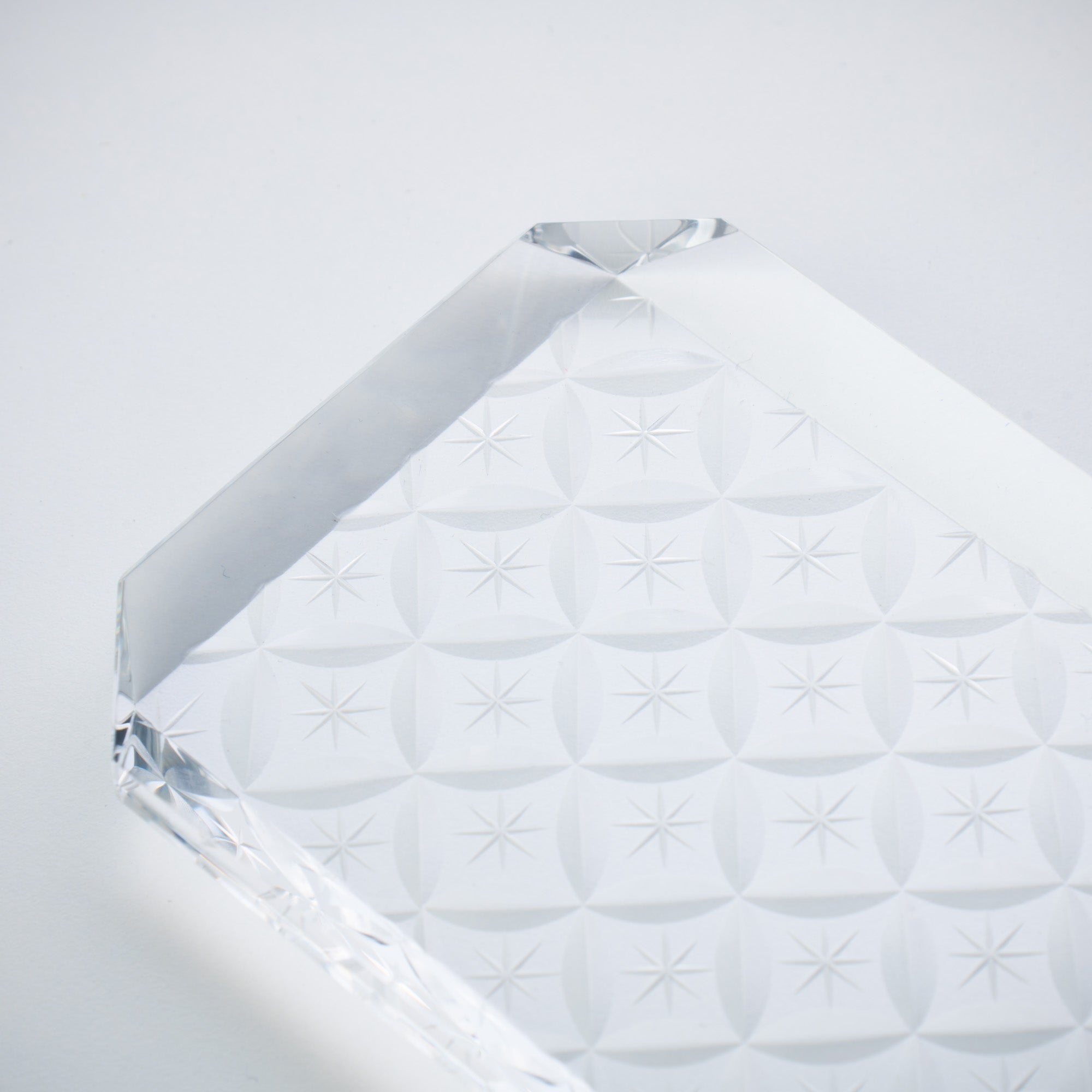


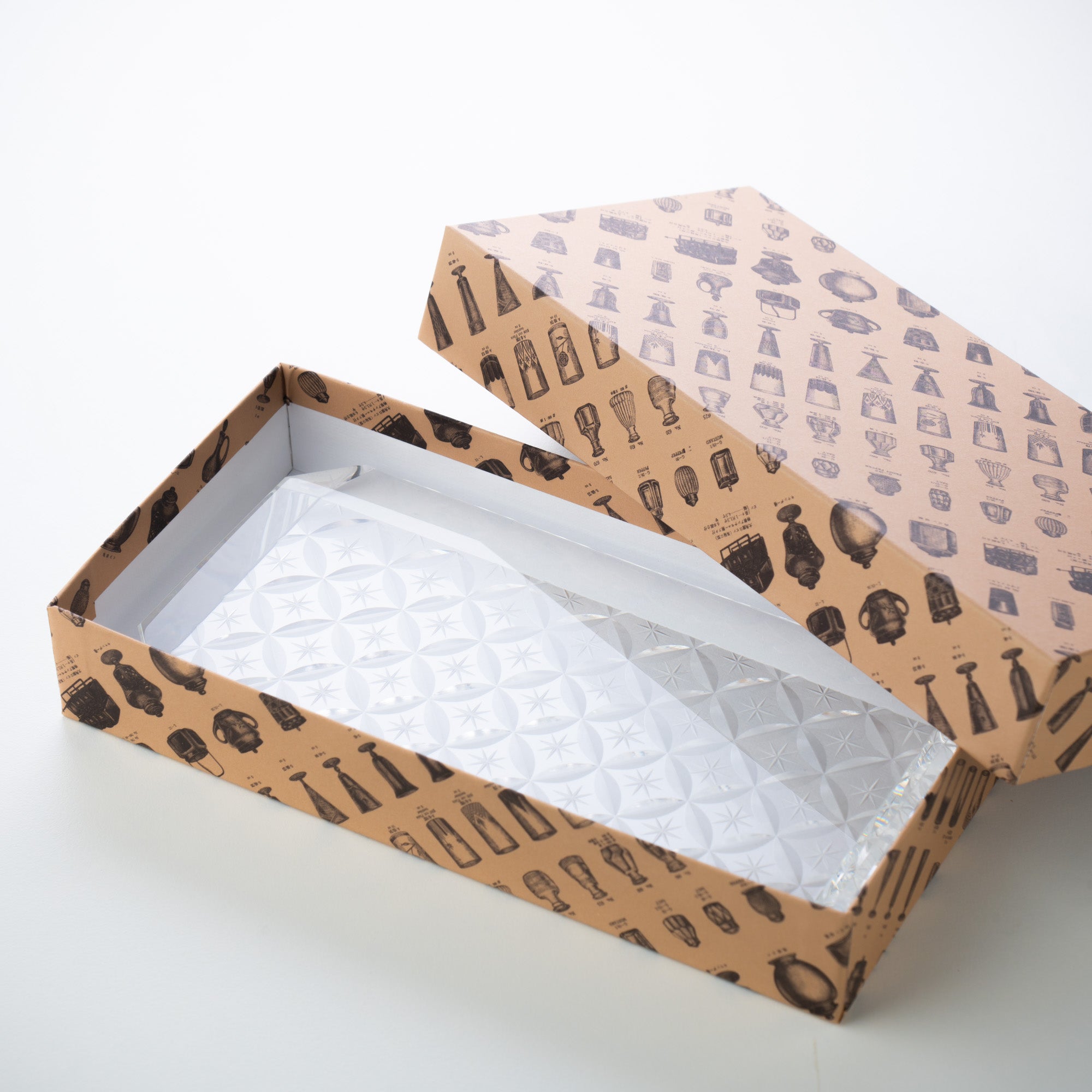
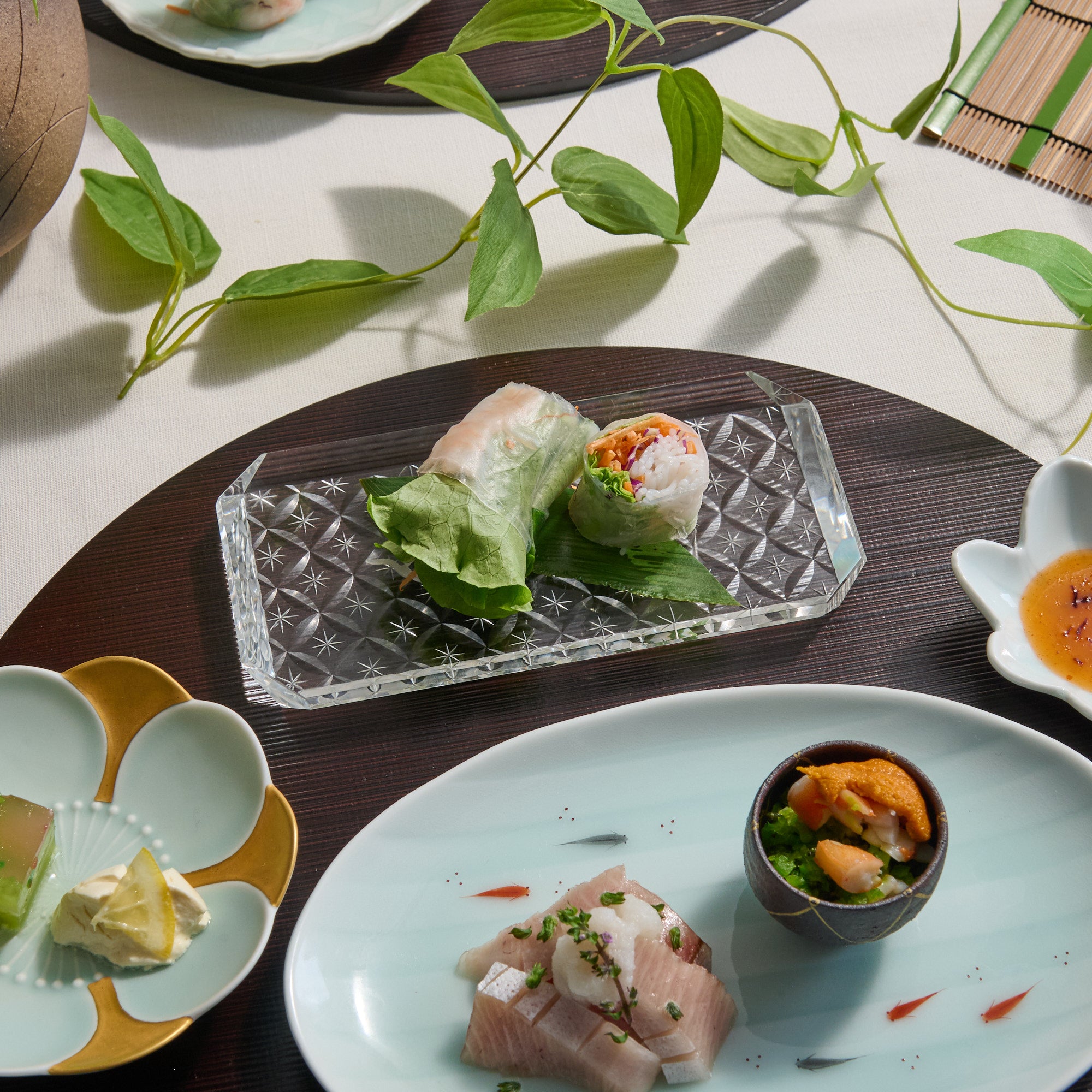
Sayuru Starburst-Beilagenteller 7,1 Zoll
Estimated Shipping Widget will be displayed here!
Wie eine perfekt gefrorene Eisfläche bringt dieser dicke, facettierte Glasteller Gewicht und Klarheit auf den Tisch. Das scharf definierte Sternenmuster ist in die Unterseite eingraviert und erinnert an die traditionelle Edo-Kiriko-Handwerkskunst, die in hochwertiges optisches Glas geschnitten wurde. Schiff Motiv – ineinandergreifende Kreise, die unendliche Schätze und dauerhafte Harmonie symbolisieren. Sayuru ist nach dem japanischen Wort benannt, das „klare Klarheit und gefrorene Brillanz“ hervorruft – ein passender Name für ein Stück, das Licht und Textur in etwas fast Skulpturales verwandelt.
Die eckigen Kanten sind diamantgeschliffen, um das Licht nach innen zu ziehen und einen sanften Schein in die Mitte des Tellers zu lenken. Die leicht zur Mitte hin geneigten Kanten reflektieren und vergrößern nicht nur die darunterliegenden Schliffmuster, sondern sorgen auch dafür, dass der Teller besser in der Hand liegt. Er eignet sich perfekt für die Präsentation kleiner Gerichte, Vorspeisen, saisonales Obst oder Delikatessen, die einen Hauch von Glanz verdienen – seine kühle, skulpturale Form eignet sich ideal für kühle Gänge und elegantes Anrichten.
EINZELHEITEN
| Quantity | 1 |
| Size | L 9 cm (3.5 in) x W 18.0 cm (7.1 in) x H 1.5 cm (0.6 in) |
| Weight | 560 g (19.8 oz) |
| Material | Glass |
| Package Type | Paper box |
| Microwave | No |
| Dishwasher | No |
Hersteller / Marke
Hirota Glass wurde 1899 während Japans transformativer Meiji-Ära (1868–1912 n. Chr.) gegründet und gilt als einer der ältesten Glashersteller Tokios. Mit über einem Jahrhundert Erfahrung bewahrt das Unternehmen die filigranen Techniken des Edo-Glases und des Edo-Kiriko und interpretiert gleichzeitig klassische Stile neu. Von sanften Rundungen der Taisho-Ära (1912–1926 n. Chr.) bis hin zu modernen Neuinterpretationen verkörpert jedes Stück die Hingabe an Schönheit, Funktionalität und traditionellen japanischen Charme.
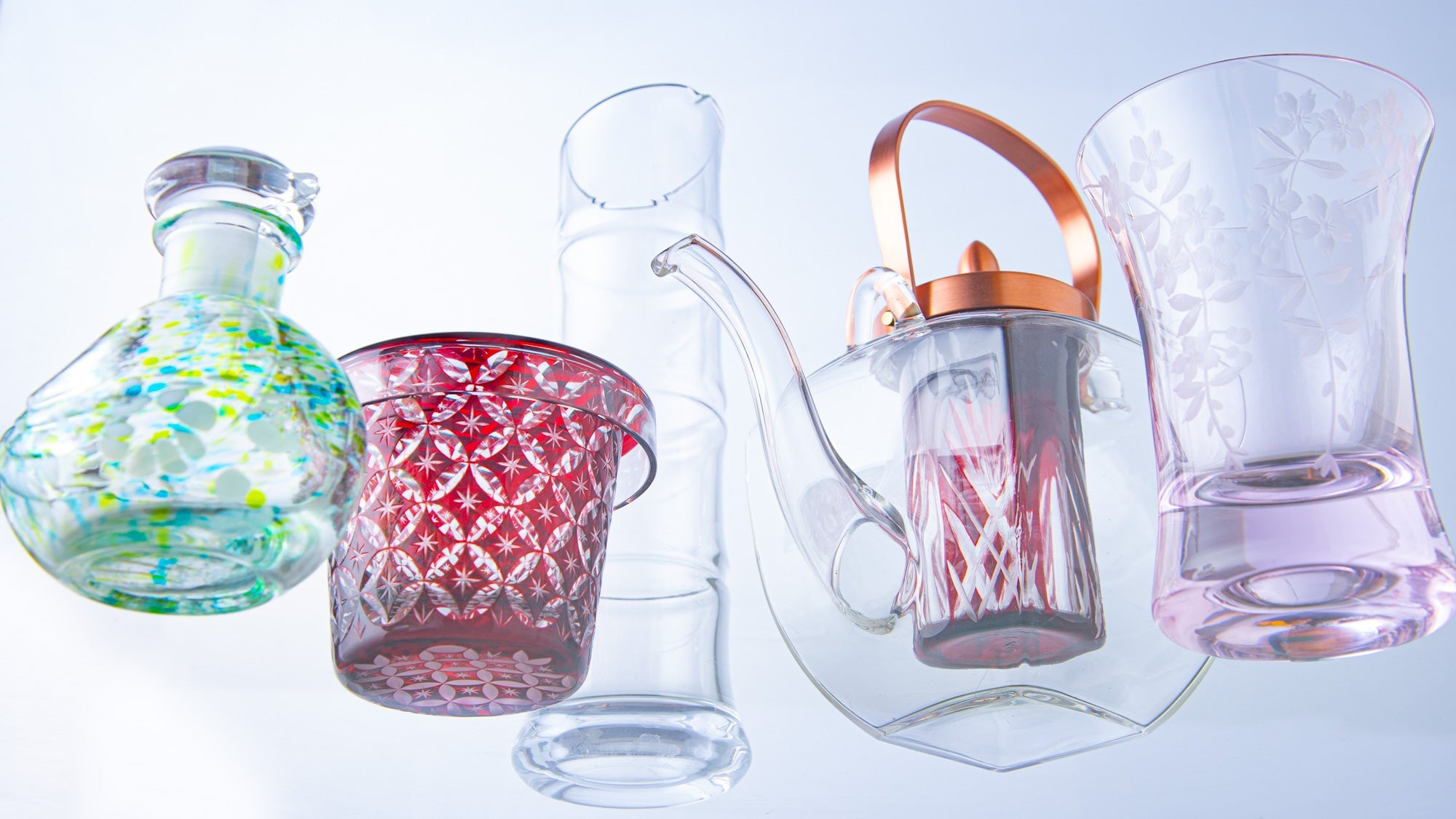
Kunsthandwerk
Tokio, die Hauptstadt Japans, ist auch ein Zentrum des Kunsthandwerks. Zu den vielen Traditionen zählen Edo-Glas und Edo Kiriko – Glaswaren, die in Edo, dem früheren Namen des Zentrums von Tokio, seit rund 200 Jahren weitergegeben werden.
Ihre leuchtenden Oberflächen spiegeln die jahrhundertealte Handwerkskunst wider, die im ehemaligen Edo-Gebiet entstand und im modernen Tokio noch immer floriert.
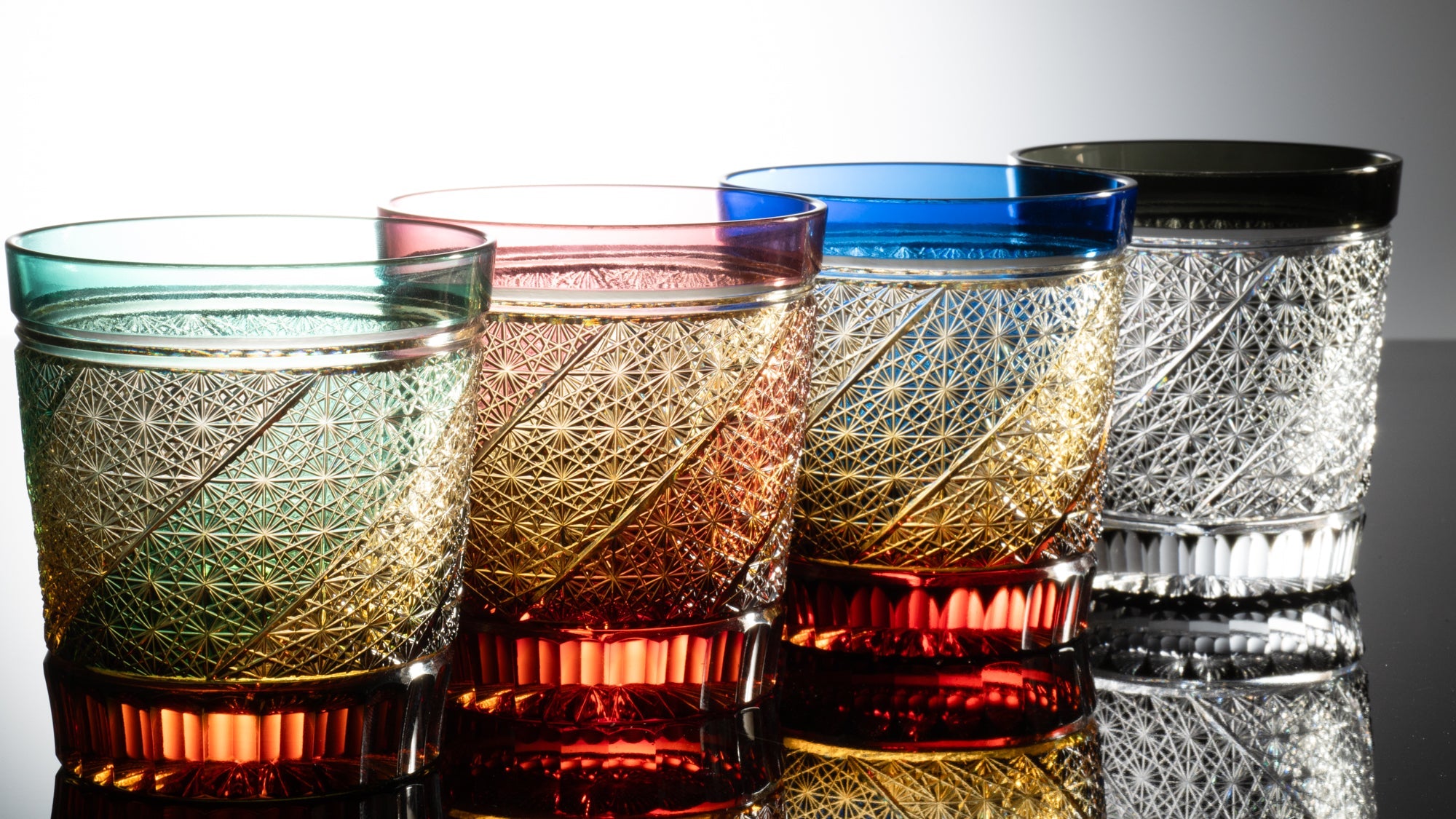
Optionen auswählen
















Estimated Shipping Widget will be displayed here!
Seitenplatten
Verleihen Sie Ihrem Tisch mit unserer Kollektion japanischer Beilagenteller, fachmännisch gefertigt von Kunsthandwerkern aus ganz Japan, ein Gefühl von Qualität. Die kleinen Teller in unserer Auswahl sind ein Schlüsselelement einer authentischen japanischen Tischdekoration und passen zu jedem Einrichtungsstil, von niedlich und farbenfroh bis klassisch und raffiniert. Diese Gerichte präsentieren Vorspeisen, Snacks, Brot, Süßigkeiten und Beilagen wie Tofu, Salat oder sogar Fischscheiben mit Leichtigkeit und Stil.
Diese Kategorie umfasst Teller mit Durchmessern von 13–20,9 cm (5,1–8,2 Zoll).
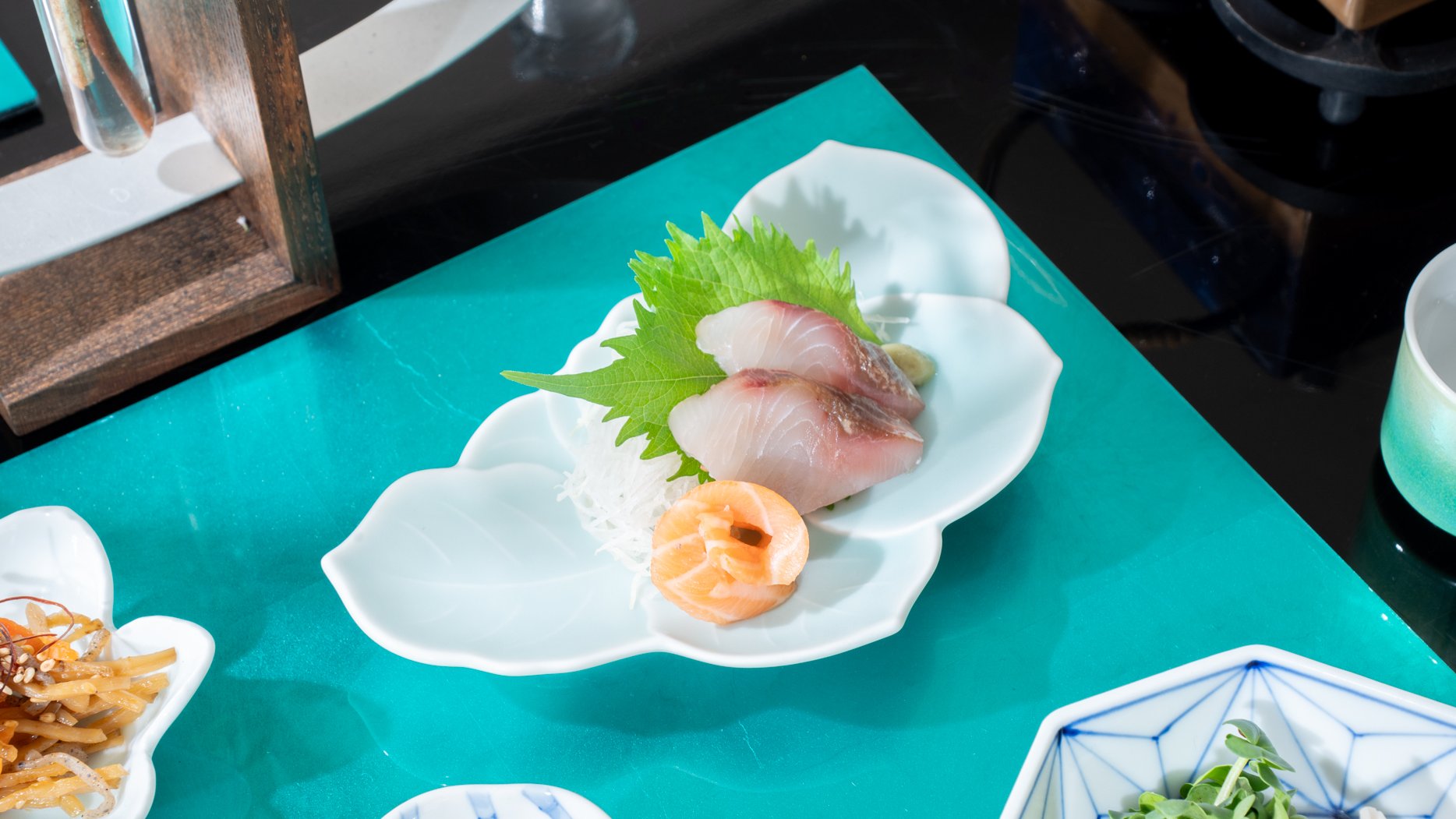
Shippo: Sieben Schätze
Der Schiff Muster, wörtlich "sieben Schätze", fEs handelt sich um ineinandergreifende Kreise, die sich unendlich erstrecken. Basierend auf japanischen buddhistischen Schriften bezieht es sich auf heilige und kostbare Schätze.
Mit der Fülle an leuchtenden Schätzen, die dieses Muster symbolisiert, eignet es sich gut für feierliche Anlässe, insbesondere als Einweihungs- und Hochzeitsgeschenk.
